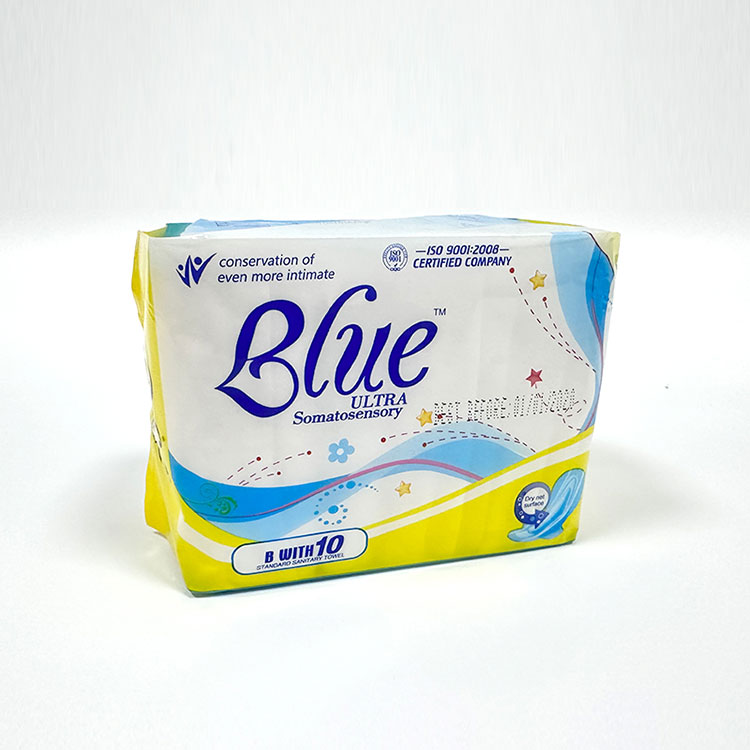Key Features of Regular Sanitary Napkins
2024-06-12
Regular sanitary napkins, commonly known as pads, are essential hygiene products used by menstruating individuals to absorb menstrual flow. They come in various types, sizes, and absorbencies to meet different needs. Here's a comprehensive overview of regular sanitary napkins:
Key Features of Regular Sanitary Napkins
1. Absorbency Levels:
- Light Flow: Designed for light days or the beginning and end of the menstrual cycle.
- Regular Flow: Suitable for average flow days.
- Heavy Flow: For days with heavier menstrual flow.
- Overnight: Longer and more absorbent for use during sleep to prevent leaks.
2. Sizes and Shapes:
- Length: Varies from short to long, with longer pads providing more coverage.
- Thickness: Ranges from ultra-thin to thick, depending on absorbency needs and comfort preferences.
- Wings: Many pads have wings that wrap around the underwear to help keep the pad in place and prevent side leakage.
3. Materials:
- Top Layer: Often made of soft, breathable materials like cotton or synthetic fibers for comfort.
- Absorbent Core: Made from materials such as cellulose fibers, superabsorbent polymers (SAP), or a combination to lock in moisture.
- Back Layer: A waterproof backing, usually made of polyethylene or another impermeable material, to prevent leaks.
4. Adhesive Strips:
- Pads typically have adhesive strips on the back and wings to secure them to underwear.
5. Breathability and Comfort:
- Designed to be breathable to reduce irritation and discomfort.
- Some pads have additional features like fragrance, though many users prefer unscented options to avoid irritation.
6. Disposability:
- Regular sanitary napkins are disposable and should be wrapped and discarded after use.
- Some brands offer biodegradable options to reduce environmental impact.
How to Use Regular Sanitary Napkins
1. Preparation:
- Wash your hands before handling the pad.
- Remove the pad from its wrapper.
2. Placement:
- Peel off the adhesive backing strip.
- Place the pad sticky side down onto the center of your underwear.
- If the pad has wings, peel off the backing strips from the wings and wrap them around the sides of your underwear to secure the pad in place.
3. Changing the Pad:
- Pads should be changed every 4 to 6 hours or more frequently if you have a heavy flow.
- To change, peel the used pad off your underwear, wrap it in toilet paper or the wrapper of the new pad, and dispose of it in a trash bin.
4. Disposal:
- Do not flush pads down the toilet as they can cause blockages.
- Use the wrapper or toilet paper to wrap the used pad before disposal.
Brands and Variants
1. Popular Brands:
- Always
- Kotex
- Stayfree
- Whisper (in some regions)
- Natracare (organic and biodegradable options)
2. Variants:
- Maxi Pads: Thicker pads for heavier flow days.
- Ultra-Thin Pads: Thinner, more discreet pads that still offer good absorbency.
- Pantyliners: Smaller and lighter for very light flow or daily freshness.
- Organic Pads: Made from organic cotton and eco-friendly materials.
Benefits
- Convenience: Easy to use and widely available.
- Variety: Available in various sizes, shapes, and absorbencies to meet different needs.
- Comfort: Designed to be comfortable and secure for daily use.
Considerations
- Sensitivity: Some users may experience irritation from certain materials or fragrances.
- Environmental Impact: Disposable pads contribute to waste; consider biodegradable options or reusable products like menstrual cups or cloth pads for a more sustainable choice.
- Cost: Regular purchase of disposable pads can add up; exploring cost-effective options is beneficial.
Conclusion
Regular sanitary napkins are a reliable and convenient option for managing menstrual flow. With various types and brands available, users can choose pads that best suit their flow, comfort, and lifestyle needs. Considering factors like absorbency, materials, and environmental impact can help in making an informed choice.



